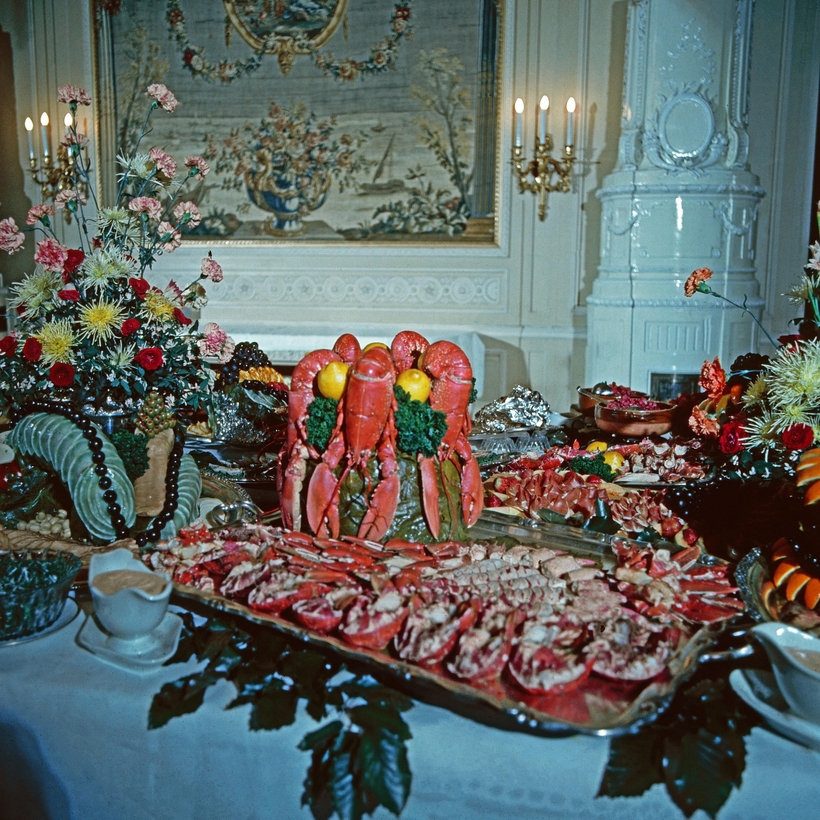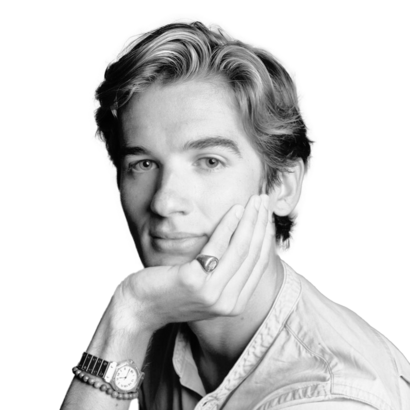“There’s a seductive ambiguity to the apéro dinatoire,” says party planner Bronson van Wyck, whose clients have included Madonna, Beyoncé, and Hillary Clinton. “It’s a cocktail party. It’s a dinner. It’s foreplay. The French have always excelled at the art of suggestion.”
One of the grandest—and most obnoxious—traditions in the English language has always been the importation of French words to euphemize, to elevate, to distract.
So it will come as no surprise, for those particularly (ahem) au fait with the smartest salons of the Anglophone world, that a new import has emerged on the already crowded linguistic scene: the apéro dînatoire, or, more commonly, the dînatoire.
(A quick primer: apéro refers to the aperitif, a pre-dinner drink taken to stimulate the appetite. Food is not expected, although some crudités would be nice. Dînatoire is the adjectival form of dîner, the French noun for the evening meal.)
Now, depending on whom you ask, this little newcomer is an arriviste of Whartonian proportions, perhaps simply a rouged-up way for luxury brands to signal that their V.I.P.’s shouldn’t come hungry to the function.
Last month, Sotheby’s, Frame, and Moda Operandi hosted a dînatoire at Three Guys diner, in Manhattan. On a single July evening on the eastern tip of Long Island, two competing dînatoires were scheduled, one at Sunset Beach in Shelter Island, courtesy of Armani, and another at the home of a prominent art collector in Bridgehampton.
Because guests will not be anchored to a formal dinner placement, they can make a French exit through multiple events in a single evening. There’s a reason French is the official language of diplomacy. “A dînatoire is a cheeky way of saying: You’re getting more than crudités, you can float in and out, and you won’t be stuck next to someone dull,” says Laurence Milstein, a veteran host and co-founder of the consulting firm PRZM. “You can open up the guest list and not stress about last-minute R.S.V.P. changes.”
Americans have never quite figured out meal nomenclature outside the Big Four—breakfast, brunch, lunch, and dinner. When you ask whether nourishment will be available at a cocktail party, you may be told there will be “finger food” or the somehow more revolting “heavy passed,” which seems redolent of an abdominal procedure.
Will the rise of the dînatoire Trojan-horse a new meal class into the American lexicon, turning the Big Four into the Big Five? At the very least, the dînatoire addresses the age-old conundrum of whether or not to make dinner plans for after a cocktail party.
“When I got into catering 25 years ago, there was a party equation that everyone followed: Stand up, sit down, leave,” says Mary Giuliani, founder of Mary Giuliani Catering and Events. “One hour of cocktails, during which waiters served tiny French hors d’oeuvres on silver trays, followed by a seated three-course meal, which almost always included Chilean sea bass and flourless chocolate cake.”
The pandemic changed all that. “Time became the most precious commodity, and entertaining evolved to involve a lot more mingling,” says Giuliani. “The food stayed delicious, but the presentation needed to be worthy of social media.” And that pasta station just won’t cut it. “The table now must be displayed in a way that conveys something like ‘Artist Jennifer Rubell was commissioned to roll the prosciutto roses.’ And, naturally, all of this needs a name—and the dînatoire was born!”
Hosts and P.R. directors take note: if you’re zhuzhing up your invitation this season with an apéro dînatoire, what you are telling your guests is that a) they will be fed, and b) they will not be formally seated. So if you’ve hired a calligrapher for place cards, or are laboring under the delusion that you’re elegantly disguising a paltry catering bet, think again. (Or pick a different term.)
When it comes to food, if the cocktail party is a hope, then the dînatoire is a promise. At least food-wise. And in polite society, a broken promise is tantamount to social suicide. Hosts and hostesses of the summer, notez bien.
Harrison Vail is the Head of Communications and Film/TV Development at AIR mail


